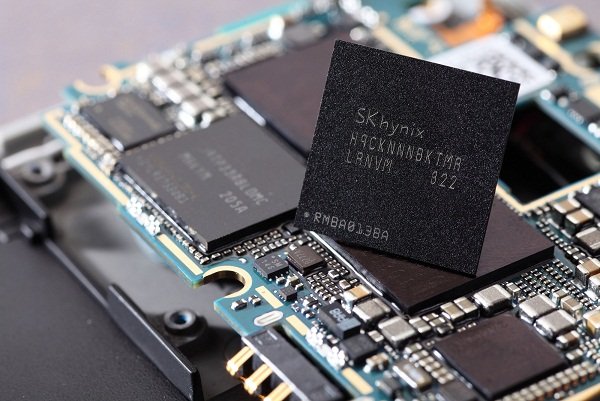More and more devices this year come with 2GB RAM in 4x 4Gbit configuration, and this is about the limit today because there aren’t 8Gbit (1GB) mobile RAM chipset available. This is about the change as Hynix has just announced they have developed 8Gbit LPDDR3 based on 20nm process technology.
Hynix new memory can be stacked up to provide 4GB (Gigabyte) in a single package that can be provided as ‘PoP’ (Package on Package), or the memory can be bundled with eMMC. Existing LPDDR3 chipsets work at up to 1600Mbps, but Hynix memory will be able to achieve 2133Mbps data transmission speed, an increase of about 33 percent. That means it can process up to 8.5GB of data per second in a single channel, and 17GB in a dual channel using 32-bit I/O.
Samples have already been shipped to customers, mass production should start at the end of this year, with products, such as high-end smartphones, tablets, and ultrabooks, likely becoming available late 2013, early 2014.
Unless Android is preparing something special, I don’t really see this amount of memory really useful for this operating system. However, I totally envision Ubuntu Touch devices taking advantage of the extra memory in desktop mode, and depending on what you do, you may not really need a laptop or desktop PC anymore, even at work. Hynix also mentioned ultrabook, so I assume their memory may also be used in Intel and AMD based devices running Windows 8 or Ubuntu in order to improve power efficiency.
The next step, 8GB RAM, won’t necessarily require 64-Bit ARM processor, as ARM addresses the 4GB limitation with LPAE (Large Physical Address Extensions), allowing up to 1TB address space on Cortex A7, A12 and A15 processors. With those extensions, the only limit will be 4GB per application.
Via Liliputing and Android Authority.

Jean-Luc started CNX Software in 2010 as a part-time endeavor, before quitting his job as a software engineering manager, and starting to write daily news, and reviews full time later in 2011.
Support CNX Software! Donate via cryptocurrencies, become a Patron on Patreon, or purchase goods on Amazon or Aliexpress





